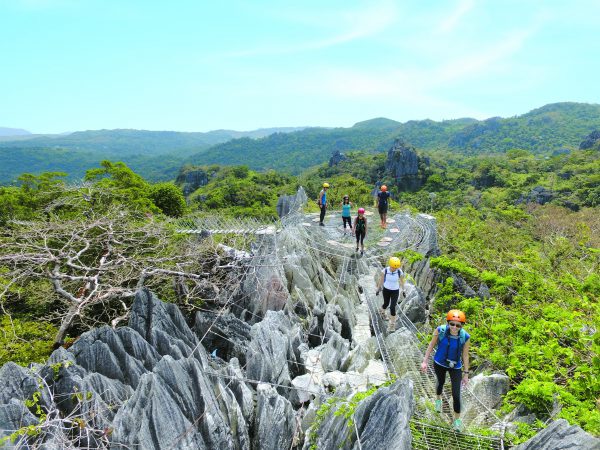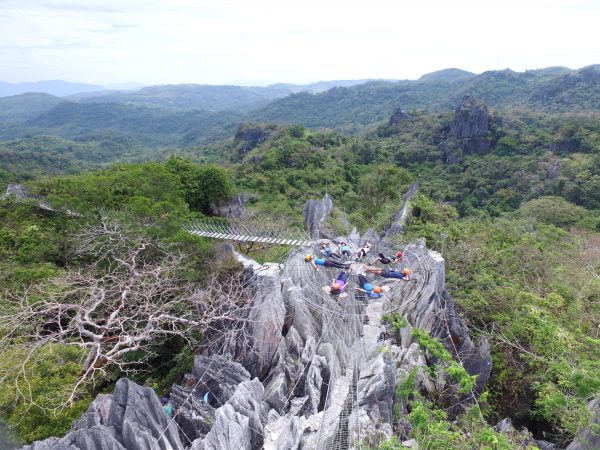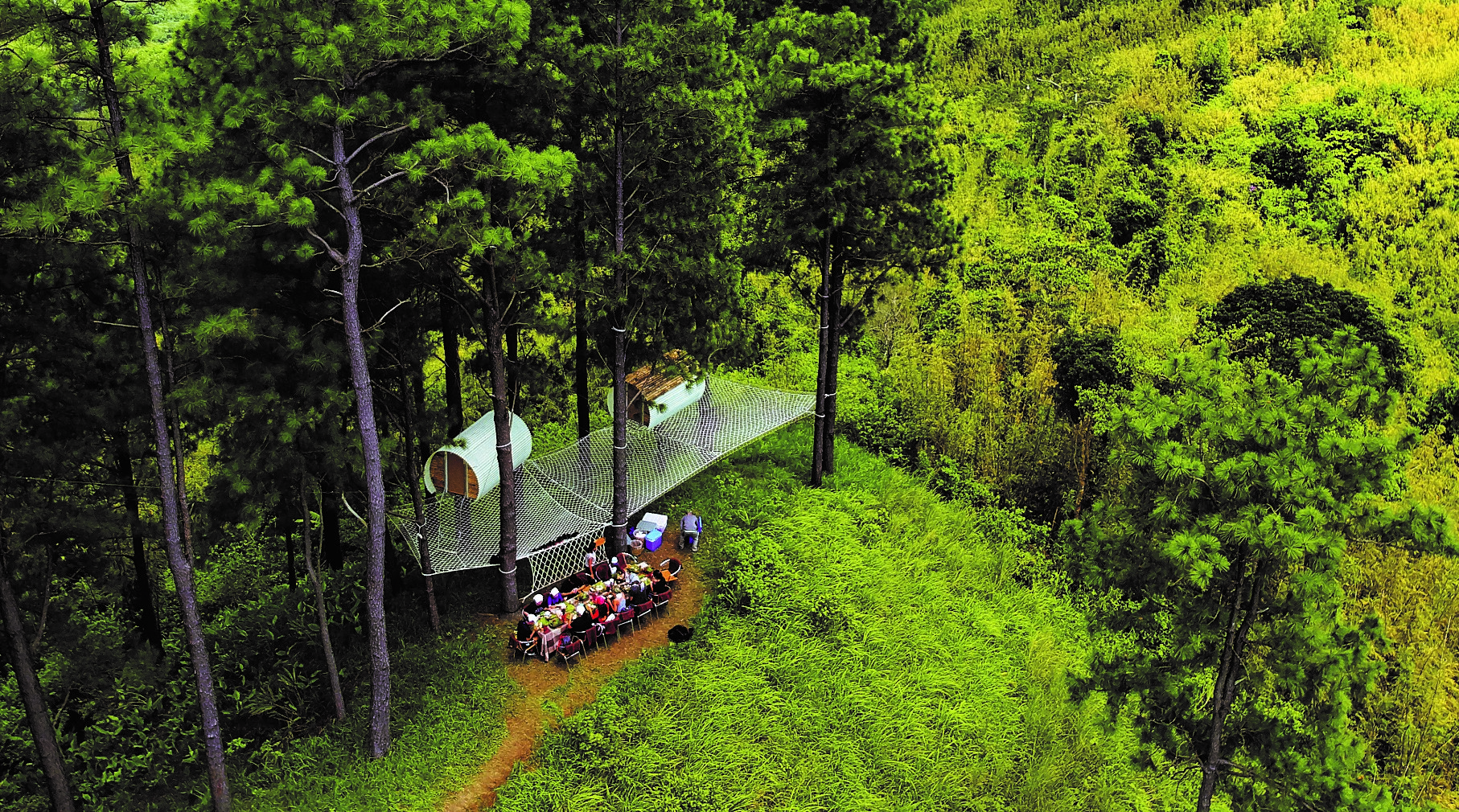MANILA, 20 July 2022: The concept of Sustainable Development has been around since its introduction in the 1987 Brundtland Commission Report by the United Nations and its eventual adaptation to the 17 Sustainable Development Goals in 2015.
The grand design of Sustainable Development is to allow economies to grow without compromising the robustness of the environment. Consequently, this expanded the ambit of this generation’s “Woke Era” from promoting social and political justice to championing the “Green Movement” to combat the furtherance of irreversible damage to ecological resources due to its misuse and abuse.

The menu for curating the right sustainable approach in the tourism industry is extensive and widely practised, from energy and waste management and water conservation to heritage and culture preservation.
Sustainable efforts in tourism inadvertently became the buy-in for travellers over time, choosing destinations that campaign for the “Greener Good” through their operations, products, and services.
During the 21st World Travel and Tourism Council (WTTC) Global Summit in Manila, the WTTC launched the Hotel Sustainability Basics (HSB) to help jumpstart the global hotel industry’s sustainability journey in an aligned and strategic manner. The HSB criteria, which are open-source and accessible to the hotel industry members, consist of 12 indicators divided into three major categories: Efficiency, Planet, and People.
Hotel and property owners and operators are encouraged to adapt the HSB criteria and benchmark with each other through Greenview’s Green Lodging Trends Report. They will have their hotels and properties validated and certified through the verification process to be launched by WTTC during the fourth quarter of 2022.
The Department of Tourism’s landmark projects like the ANAHAW Certification for Sustainable Tourism (in collaboration with GRaT Center for Appropriate Technology through the Zero Carbon Resorts) developed foolproof measures that ensure hotels and resorts comply with the highest sustainability standards in their day-to-day operations. Likewise, DOT’s “Keep the Fun Going” campaign allows tourists to participate in the department’s advocacy by raising awareness about responsible travel and reinforcing sustainable practices through gamified challenges.
The holistic approach to promoting sustainable tourism is front and centre not only for DOT but for its attached agencies as well. For example, the Tourism Promotions Board (DOT’s marketing and promotional arm) supporting local community-based tourism sites and attractions has been a priority since 2018 through the sustainable community-based tourism (SCBT) project. The SCBT project includes the identification, assessment, and inclusion of a local community-based tourism site or attraction in the tourism circuits promoted by the agency to domestic and international markets.

One of the emerging sustainable tourism sites in the country is the internationally recognised and multi-awarded Masungi Georeserve in Baras, Rizal, a geotourism site built on the principle of environmental and social conservation of the area.
Masungi Georeserve Foundation managing trustee Ann Adeline Dumaliang shared what sustainable tourism means to her as an advocate.
“Sustainable tourism, for me, is about understanding and taking transformative action in our roles as stewards in the destinations and communities where we belong. It’s about positively contributing to an area’s sense of pride of place and helping it become a better place for the planet and people. Regenerative tourism and geotourism are what, more clearly, encapsulate our brand of sustainable tourism.”
Further, when asked if the Masungi Georeserve is poised to be a sustainable tourist destination, Dumaliang explained that “Masungi Georeserve is transformative and regenerative in its approach. Our experiences are about the importance of the karst landscape we are moving in with a focus on quality instead of quantity as a success metric.
“We have an environmental carrying capacity which we respect, and we have decisively opted for low-impact engineering approaches instead of traditional development and take our role seriously as stewards of the area for the long haul. Most importantly, we have already restored the area we have been moving in for two decades now and further use our returns to lead the restoration and protection of some 2000 more hectares of land, some of which constitute the Upper Marikina Watershed – an area critical to the safety of 20 million Filipinos all the way downstream in Metro Manila, and one that has suffered a continuous decline in its forest cover (from 19% in 2011 to 11% in 2018) despite being declared a protected area. Our voice, visitors, and allies have become instrumental in overcoming anomalies and tactics in organised crime, speaking truth to power, and overcoming inertia for watershed rehabilitation.”
With the efforts of WTTC in its HSB initiative, DOT’s ANAHAW Certification for Sustainable Tourism, and TPB’s SCBT, Dumaliang shared her hope for sustainable tourism in the country.
“I hope for sustainable tourism to be mainstreamed and elevated in the Philippines in the coming years – the norm instead of the exemption, building on what has been started in this administration. This is only sensible being a country that relies on its natural heritage for tourism, and tourism is an industry that contributes significantly to our GDP and is threatened by the climate crisis. By taking deliberate action in this direction, we can make an even stronger mark in the global tourism space and increase its contributions to the country. If we can power sustainable tourism businesses that serve as destination stewards, we can care better for more areas of the country. Let’s suppose we can adopt the standards of the Global Sustainable Tourism Council (GSTC). In that case, we will be able to nurture a quality community of changemakers in the tourism space that can power each other forward.
“The Asia-Pacific Economic Cooperation, through its Sustainable Development of Tourism Destinations study in 2013, clarified that sustainable tourism is not a type of tourism but rather a condition; a condition that the DOT and TPB vow to uphold to remind us that we can continue to harness the significant economic contribution of the tourism industry if we foster sustainable practices, inevitably introducing a new mindset among Filipino people that: “The greener pasture isn’t on the other side, but it is under our feet if we choose to nurture it.”
The Asia-Pacific Economic Cooperation, through its Sustainable Development of Tourism Destinations study in 2013, clarified that sustainable tourism is not a type of tourism but rather a condition; a condition that the DOT and TPB vow to uphold to remind us that we can continue to harness the significant economic contribution of the tourism industry if we foster sustainable practices, inevitably introducing a new mindset among Filipino people that, “The greener pasture isn’t on the other side, but it is under our feet if we choose to nurture it.”
For more information visit: https://www.tpb.gov.ph/
(Your Stories: Tourism Promotion Board)







